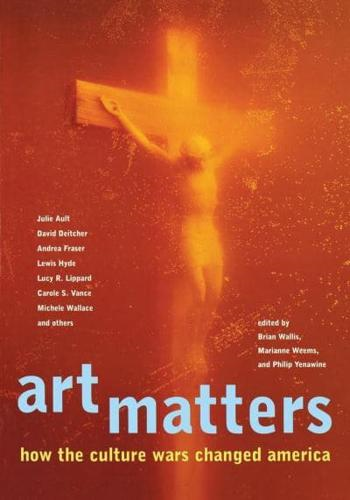A collection of intensive discussions about the role of visual arts in public life
The past decade has seen American culture deeply divided by debates over social identity, public morality, communal values and freedom of expression. A key focus of these polarizing discussions has been the role of visual arts in public life. In Art Matters, five leading cultural critics and two prominent contemporary artists show the ways that this debate has profoundly reshaped our view of American culture. Lucy Lippard investigates the extraordinary recent transformations in visual art; Michele Wallace takes on high art, popular culture, and African American identity; David Deitcher discusses queer culture and AIDS; Carole S. Vance ponders censorship and sexually explicit imagery; and Lewis Hyde considers democracy and culture. Projects by artists Julie Ault and Andrea Fraser provide a context for these debates. Art Matters also offers a close examination of attempts to develop alternative funding sources for artists, focusing specifically on the influential private foundation Art Matters-a foundation which became an important proponent for new forms of art and for protecting freedom of expression through its funding and advocacy efforts.







